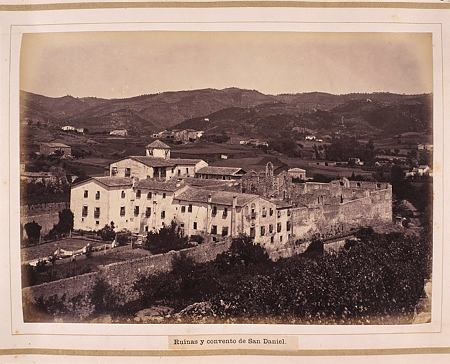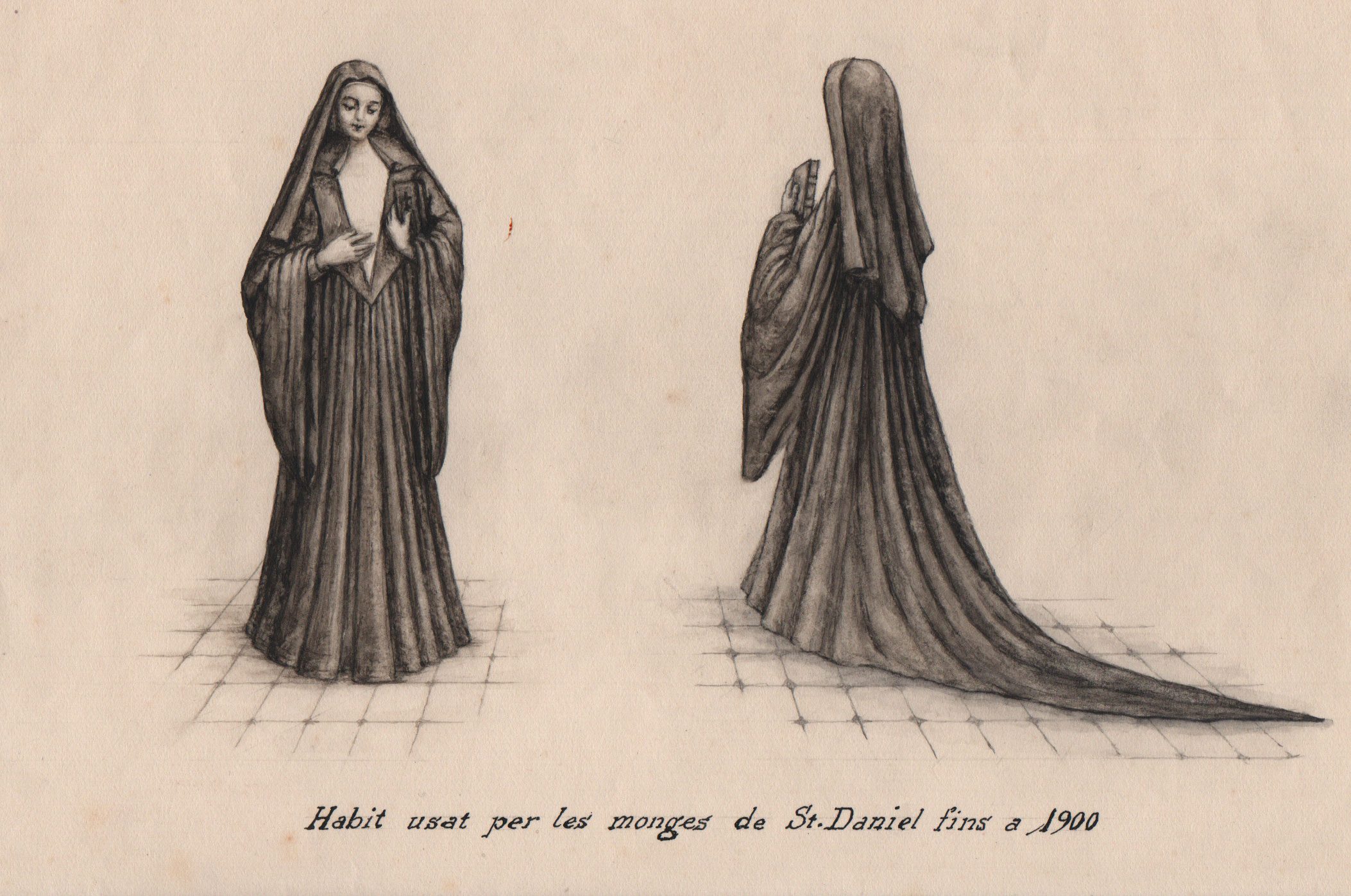![]()
FOUNDATION AND BEGINNINGS OF THE MONASTERY: THE FIRST NUNS
On 18 June 1015, Countess Ermessenda and her husband, Count Ramon Borrell, purchased the old Church of Sant Daniel and the surrounding property in exchange for one hundred ounces of gold. The first mention of the Monastery of Sant Daniel came three years later, in a document dated 16 March 1018 that explains that the counts gave the community some land in order to ensure its survival.
The monastery prospered and consolidated itself in the following years. The old Church of Sant Daniel and the quarters set aside for community life were rebuilt. There are no doubts about the Benedictine ascription of Sant Daniel; the first mention of the monastic rule appears in a document dated 1070. Some names are known from these early times: Bonafilla was abbess in 1028 and Arsenda in 1067.


THE MONASTERY IN THE MIDDLE AGES
I n the following centuries the community and wealth of the monastery grew considerably, thanks to donations, bequests and the dowries of the daughters of the nobility who took vows there. It was not uncommon for mothers and daughters to live together at the monastery, the daughters as nuns and their mothers as lay sisters after being widowed. The monastery thus became a place where women were able to consecrate their lives to God and live together with other women, united by family ties or other connections.
THE PROTECTION OF COUNTS AND KINGS
The counts who were descendents of Ermessenda and Ramon Borrell continued to protect the Monastery of Sant Daniel, and Countess Mahalta of Pulla-Calabria deserves special mention. Also monarchs such as King Pere I, who granted the monastery privileges in 1209, later confirmed by King Jaume I, King Alfons III, King Pere III and King Martí I. In Rome, the Pope also made various provisions to protect the monastery.
DAUGHTERS OF THE NOBILITY
It was decided in early times that all the nuns at the monastery had to be daughters of the nobility. Most of them came from families in the Girona region: from Palera, Foixà, Cabrera, Cruïlles and other nearby districts. The nuns held pride of place in the monastery among the choirgirls, novices and votaries who lived together with the lay sisters and servants.


![]()
MODERN TIMES
The religious and social origins of the community of the Monastery of Sant Daniel have lasted down to modern times and this is demonstrated by the invitations issued to the nuns to participate in religious acts and ceremonies in Girona. Before the Council of Trent the Benedictine order did not forbid its members to leave the monastery and, with the permission of the abbess, they could visit relatives or participate in certain celebrations.
In the 15th and 16th centuries, the properties of three communities of nuns that disappeared during that time were annexed by the monastery. These were the Monastery of Santa Margarida del Prat, in Roses, the Monastery of Santa Maria del Mar, in Calonge, and the Monastery of Valldemaria, in Maçanet de la Selva.


Over the centuries the community was forced to temporarily abandon the monastery on various occasions in times of war, due to its location just outside the walls of the city of Girona.

During the Reapers’ War (1640), the nuns took shelter for a few days in the quarters of the Archdeaconate of Empordà, near the cathedral. During the War of the Pyrenees (1793-1795), all the communities had to leave by order of the bishop. The monastery served as a military barracks in the community’s absence.
When the nuns returned to Sant Daniel in October 1795, they found the building partly in ruins. During the Peninsular War (1808-1814), the community once again took refuge inside the walls of Girona, where the nuns lived through the siege of the city.
On 13 August 1855, government officials entered the Monastery of Sant Daniel to procure the documents needed to confiscate its land and assets, in accordance with law of expropriation of religious wealth.
The community managed to retain ownership of the monastery during a time of social and economic change that affected the nuns too. For example, most of them abandoned the old system of residing in private quarters within the building and adopted a communal lifestyle.


